24+ Different Types Of Windflowers To Admire This Spring
The windflower, also known as Anemone, is a fascinating and diverse group of flowers that come in 24 distinct types. Each type has its unique characteristics, colors, and meanings. In this article, we will delve into the world of windflowers, exploring their varieties, symbolism, and potential toxicity. We will also provide visual aids to bring these stunning flowers up close and personal. Windflowers have been a subject of fascination for many, with their delicate petals and intricate details.
But what makes them so special? Let’s start by exploring the different types of windflowers, including:1. Poppy anemone (Anemone coronaria)2. Anemone Coronaria ‘Blue Poppy’3. Anemone Trifolia ‘Bridal Veil’4. Anemone ‘Pink Double’5. Anemone hupehensis ‘Hadspen Abundance’6. Anemone x hybrida ‘Honorine Jobert’7. Anemone hupehensis ‘September Charm’8. Anemone pulsatilla ‘Pasque Flower’9. Anemone hupehensis ‘Prince Henry’10. Anemone Coronaria ‘Mount Everest’11.
Japanese anemone (Anemone hupehensis)12. Anemone ‘Dreaming Swan’ (Japanese Anemone)13. Anemone ‘Wild Swan’ (Japanese Anemone)14. Balkan anemone (Anemonoides blanda)15. Anemone Blanda ‘Blue Shades’ (Grecian Windflower)16. Anemone Blanda ‘Blue Star’ (Grecian Windflower)17. Anemone nemorosa (Wood anemone/European thimbleweed)18. Anemonoides ranunculoides (Yellow anemone/buttercup anemone)19. Snowdrop anemone (Anemone sylvestris)20. Tulip anemone21. Anemone tomentosa22.
Canada anemone (Anemonastrum canadense)23. Anemone quinquefolia (Wood anemone)24. Anemone palmata (palmate windflower)In addition to exploring the various types of windflowers, we will also provide guidance on how to cultivate and care for these beautiful flowers.
What is a windflower?
Perennials are fascinating, and one such example is the anemone, also known as a windflower. This herbaceous plant thrives through its ability to grow from rhizomes, which provide it with the necessary sustenance for survival. Its foliage boasts dark green leaves adorned with lobes on either side of the stem, giving it a distinctive appearance. As the seasons change, the anemone produces vibrant flowers in either spring or summer, depending on your geographical location.
Interestingly, this plant has its origins in North America, but its adaptability has enabled it to spread globally, and today, it can be found thriving in temperate regions worldwide.
Windflower Overview
As the last wisps of winter’s chill dissipate, windflowers burst forth with vibrant colors, claiming their rightful place as a spring garden staple. Their early blooming habit serves as a beacon of hope, signaling the arrival of warmer days to come. The diverse windflower family boasts over 100 species, each boasting unique characteristics that set them apart from one another.
Some display delicate, fern-like foliage, while others feature intricate floral patterns or petals in a kaleidoscope of colors. Moreover, their perennials nature allows them to return year after year in USDA zones three through nine, thriving in full sun to partial shade and average soil conditions. A notable bonus is that most windflower cultivars are deer- and rabbit-resistant, making them an attractive addition to any garden seeking a low-maintenance yet high-reward display of color.
What does a windflower look like?
The windflower’s botanical profile is characterized by its slender, upright stems that can reach heights of up to three feet. The foliage features dark green leaves with distinctive lobes, situated on either side of the stem. At the apex of each plant, a single, delicate flower head emerges, comprising numerous tiny petals in a kaleidoscope of colors including white and blue.
This arrangement gives the appearance of an umbrella-like structure hovering above its supporting stalk, adding to the windflower’s unique charm.
What do windflowers symbolize?
The symbolism surrounding windflowers is rooted in their unique characteristic of being susceptible to external forces, specifically the whimsical nature of the wind. This adaptability has led many to associate these flowers with change and unpredictability, reflecting the ebbs and flows that can occur in our lives. Beyond this, windflowers are also often seen as a representation of innocence, new beginnings, and purity, reflecting their delicate beauty and untainted essence.
Toxicity:
While windflowers themselves are not considered toxic, they can still pose a problem for individuals with known allergies. For those who have experienced adverse reactions to certain substances before, it’s crucial to exercise caution when introducing windflowers to their garden. This is especially important if there’s a history of allergic reactions within the family.
Non-Tuberous Anemones:
The anemone family boasts a diverse range of species, with three notable varieties standing out for their vibrant colors and extended flowering seasons. The Anemone coronaria, native to the Mediterranean region, showcases a palette of pinks, whites, or reds during its February-to-May bloom period.
Its counterparts, Anemone hupehensis and Anemone blanda, also hail from this Mediterranean cradle, with the former displaying striking blue blooms between April and May, while the latter exhibits blues, whites, or pinks from March to June.
Tuberous Anemones:
The various species of anemones, also known as windflowers, showcase a range of characteristics. For instance, Anemone nemorosa boasts leaves with lobed bases and produces white blooms from March to May. Meanwhile, Anemone ranunculoides features deeply lobed leaves and yields yellow, orange, or red flowers from April to June. The European native Anemone pulsatilla is distinguished by its purple or blue hues, blooming from April through May.
Another European native, Anemone sylvestris, exhibits white, yellow, or pink colors with deeply divided leaves at the base and produces flowers from March through May. Lastly, Anemone tomentosa, found in Europe and Asia, is characterized by its white blooms and dense hairs on the stem or flower heads, which bloom from March to April.
Different Types Of WindFlowers
Poppy anemone (Anemone coronaria)
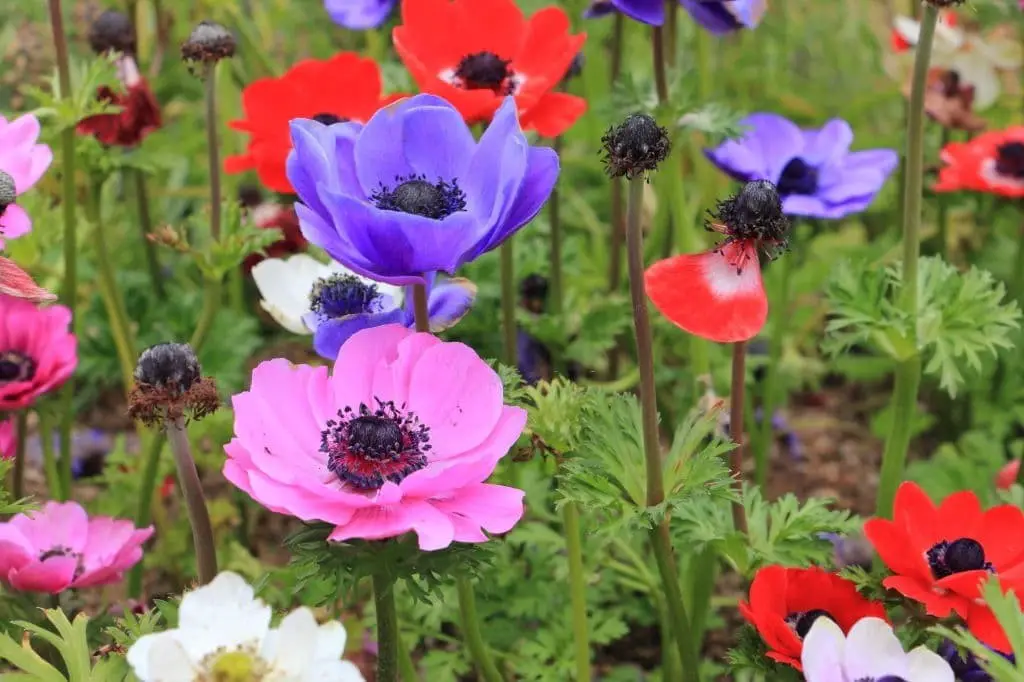
The iconic windflower, poppy anemone, is often the first thing that comes to mind when people hear the term ‘windflowers.’ These stunning flowers boast striking black centers and dainty petals in a range of colors including white, pink, purple, red, and blue. As the seasons change, poppy anemones typically burst into bloom between March and May, thriving in U.S. Department of Agriculture plant hardiness zones seven through 11.
Anemone Coronaria ‘Blue Poppy’

For spring gardening enthusiasts seeking a stunning addition to their outdoor space, the Anemone Coronaria ‘Blue Poppy’ is an excellent choice. This captivating windflower boasts vibrant blue petals and dainty white centers, guaranteeing to grab attention. Furthermore, its low-maintenance requirements make it an ideal option for busy gardeners. Simply plant it in a sunny area and ensure it receives sufficient water supply, and you’ll be rewarded with a breathtaking display of beauty.
Anemone Trifolia ‘Bridal Veil’
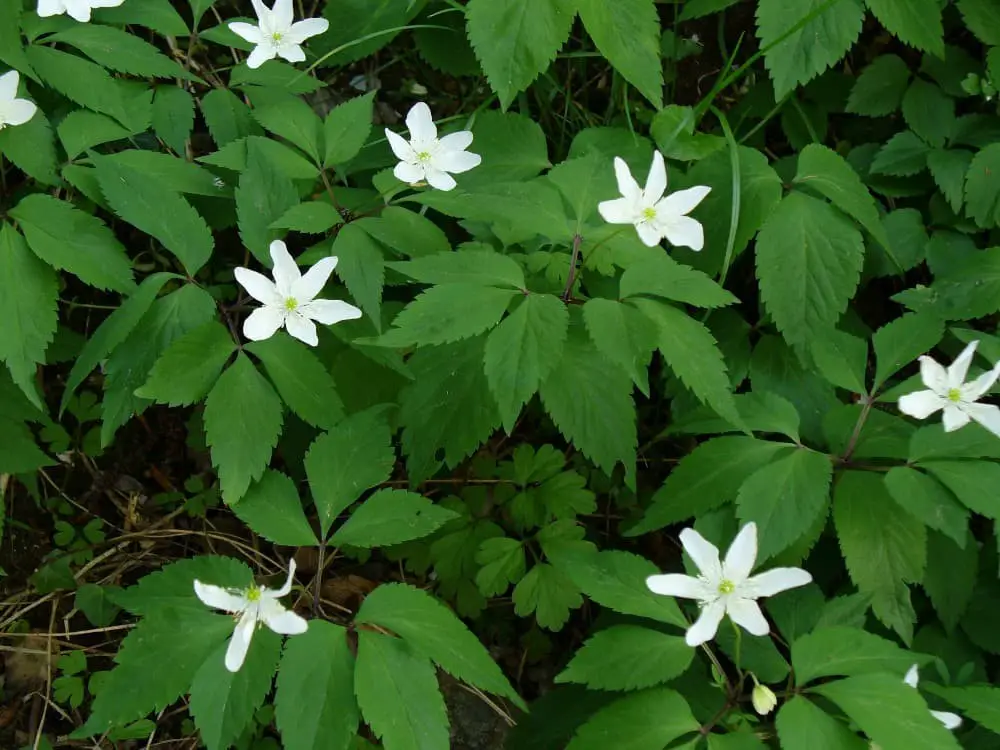
The windflower is a charming option for your garden, boasting delicate white petals and striking deep purple centers that are sure to leave any bride beaming on her wedding day. Additionally, this lovely bloom has the advantage of being drought-tolerant, ensuring it remains resilient in the face of summer’s heat and humidity.
Anemone ‘Pink Double’
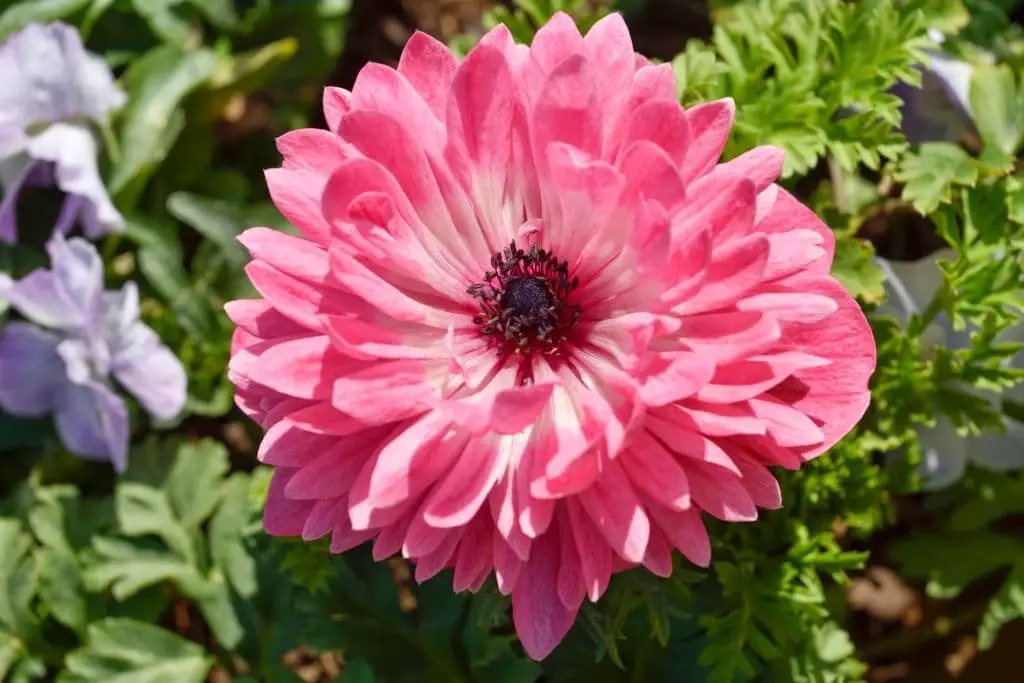
For those seeking a bit more flair in their windflowers, Anemone ‘Pink Double’ is an excellent choice. Its unique feature is the double layer of pink petals that offer a visually striking display. Additionally, this variety is known for its low maintenance requirements and will continue to bloom throughout the summer months, providing a delightful pop of color in your garden or arrangement.
Anemone hupehensis ‘Hadspen Abundance’
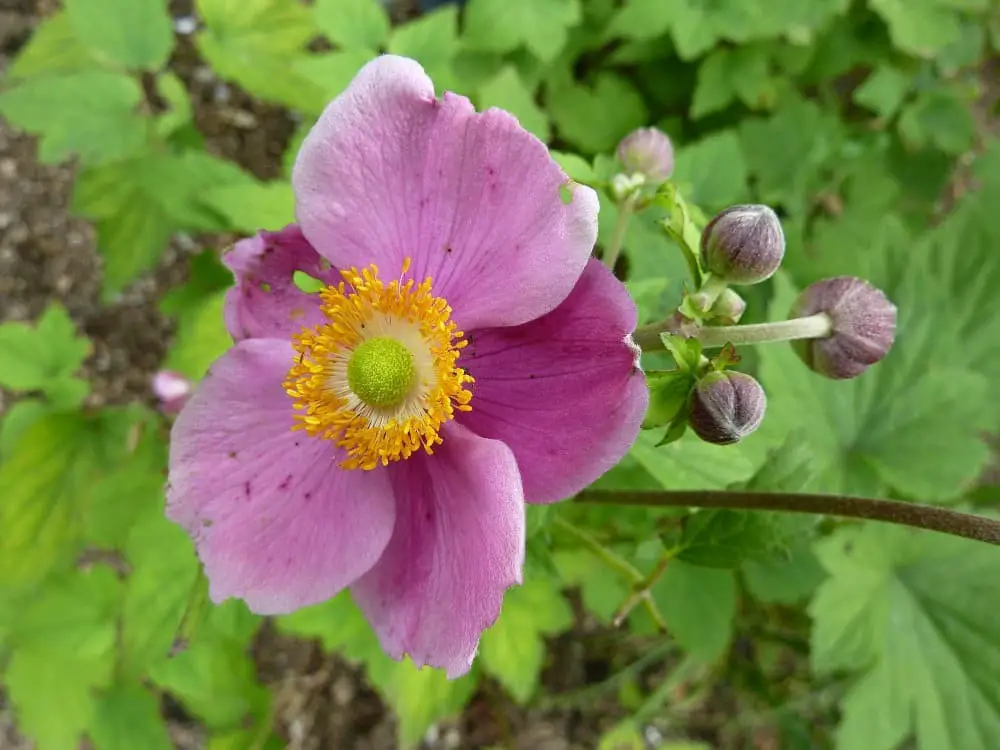
What makes this windflower truly remarkable is its impressive floral display. Its massive blooms can grow up to six inches in diameter, guaranteeing a showstopping presence in any garden setting. What’s more, the blooms persist throughout the entire growing season, ensuring that your outdoor space remains a vibrant and colorful haven all year round.
Anemone x hybrida ‘Honorine Jobert’
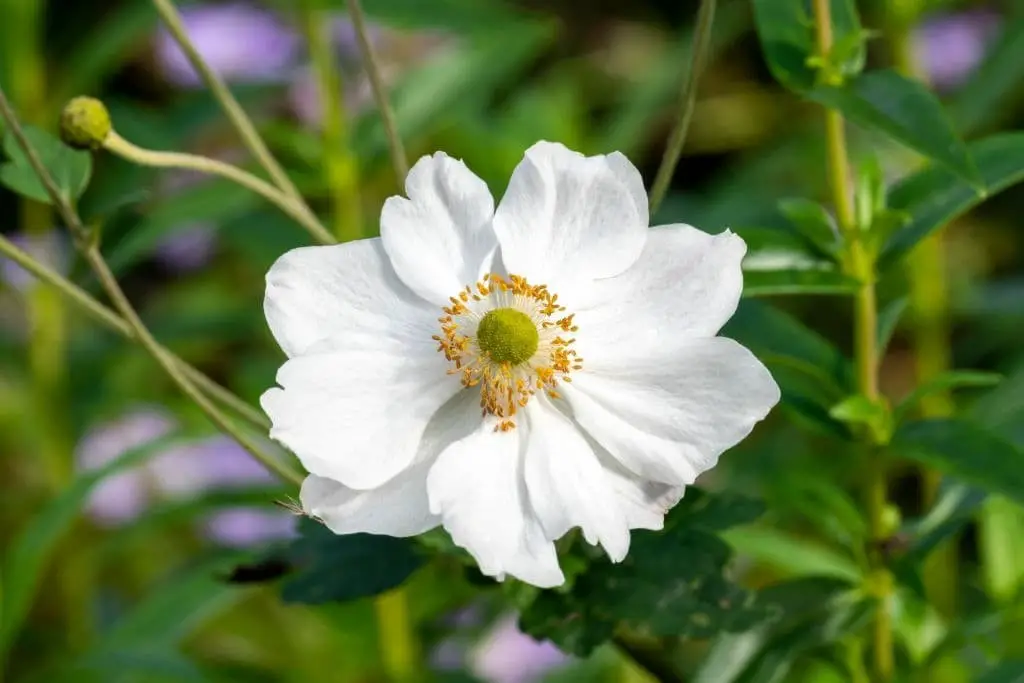
For a stunning display of large, vibrant white petals and a rich purple centre, turn to Anemone x hybrida ‘Honorine Jobert’. This elegant variety of windflower is certain to bring sophistication and charm to your outdoor space, making it an excellent choice for gardeners seeking to add a touch of refinement.
Anemone hupehensis ‘September Charm’
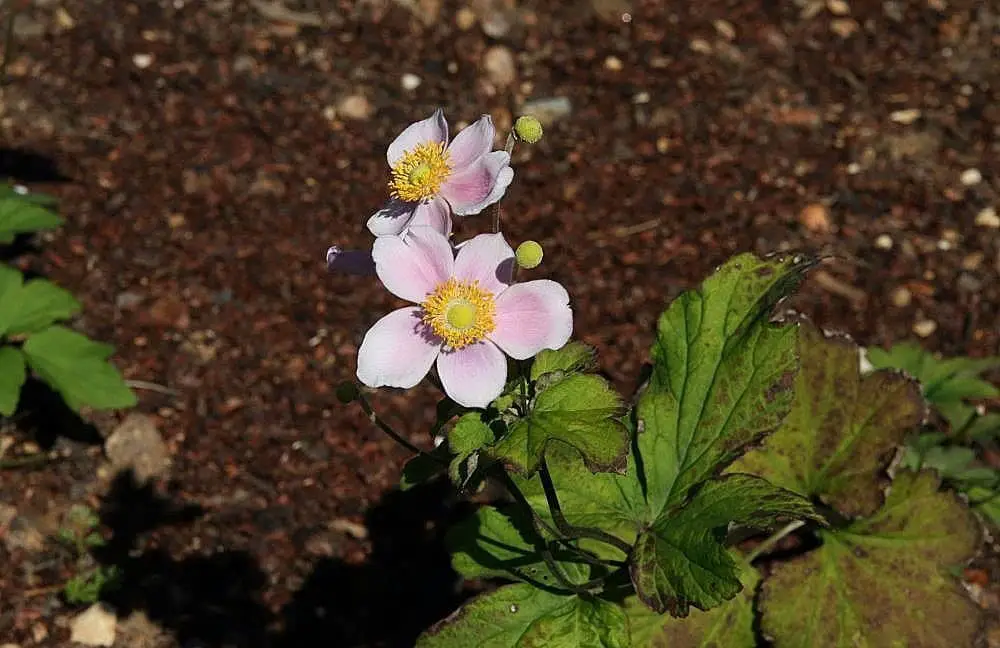
The anemone, specifically Anemone hupehensis ‘September Charm’, is a sought-after addition to spring gardens due to its delicate charm. Its soft pink petals with yellow stamen create a beautiful display. While many windflowers cease blooming in the summer months, this variety thrives from July and August onwards. Moreover, it’s notable for continuing to flower late into autumn and even early winter if the weather remains mild, earning it the name ‘September Charm’.
Anemone pulsatilla ‘Pasque Flower’
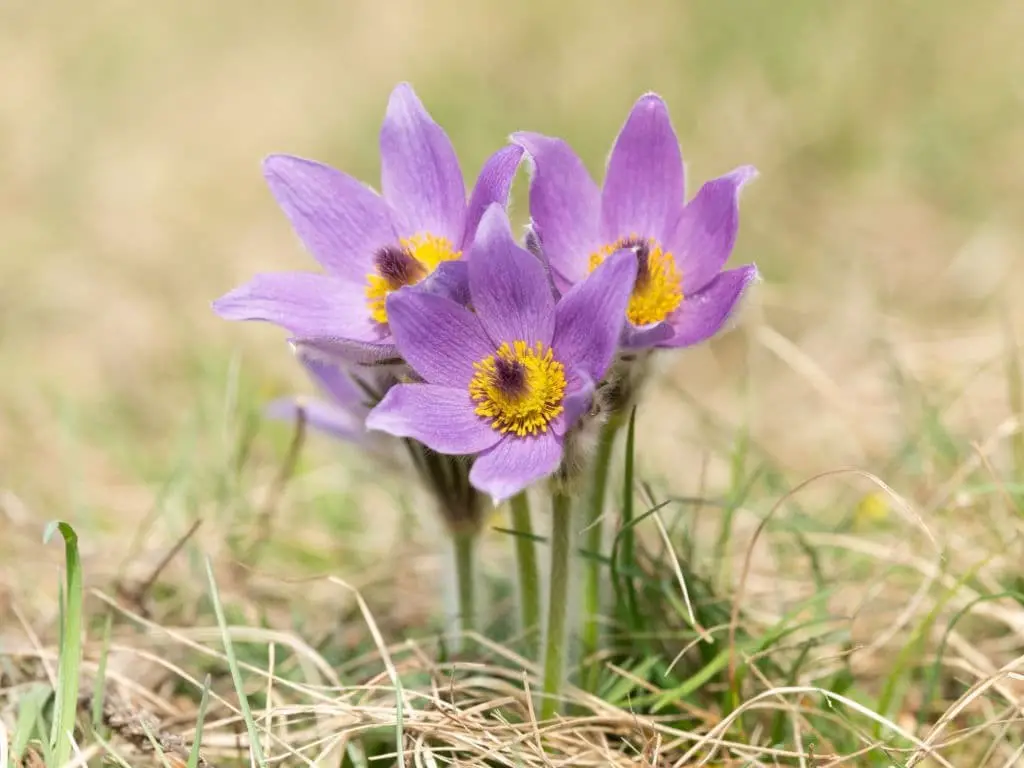
The pasque flower (Anemone pulsatilla ‘Pasque Flower’) is an early spring bloomer that produces delicate, fern-like foliage and single flowers in a range of colors including white, pinkish purple, lavender, and blue. This short-lived perennial self-seeds readily, ensuring a constant supply of new plants each year. Pasque flower thrives in full sun or partial shade and excels in well-drained soil, making it relatively drought tolerant once established.
Its beauty makes it an ideal addition to rock gardens, borders, and meadows. As an added benefit, pasque flowers are deer resistant, making them a great choice for gardeners who struggle with wildlife control.
Anemone hupehensis ‘Prince Henry’
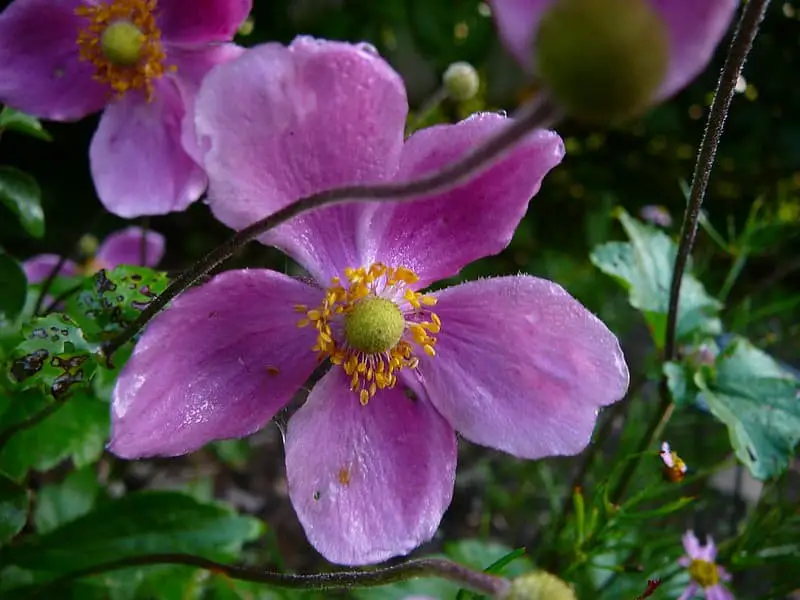
As the last wisps of winter dissipate, anemones burst forth with vibrant life, their nodding blooms signaling the arrival of spring. The ‘Prince Henry’ variety is particularly notable, boasting deep-red centers surrounded by delicate white petals. At a compact 15 inches tall, this charming cultivar thrives in the front of borders or in containers on patios, inviting all to bask in its beauty and herald the return of warmer days.
Anemone Coronaria ‘Mount Everest’
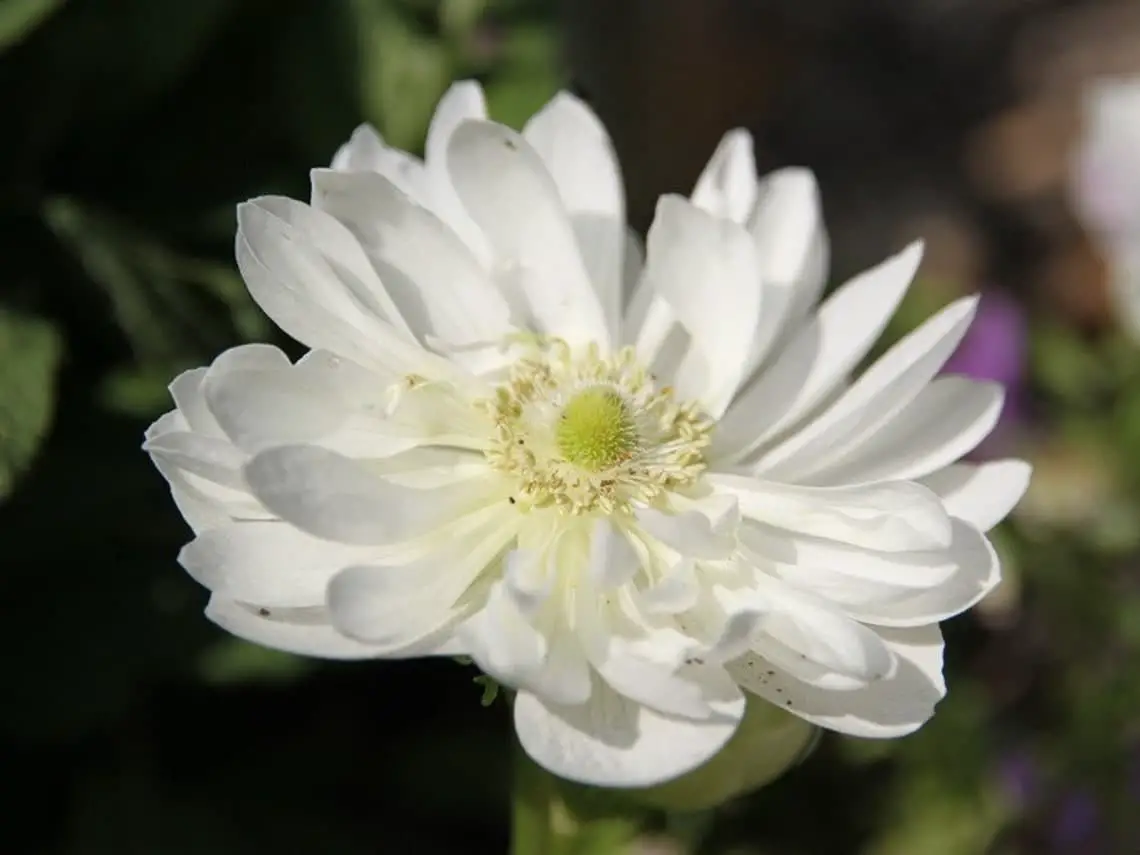
Experience the majesty of the ‘Mount Everest’ anemone on Etsy, as this striking variety reaches impressive heights of up to 18 inches. Its vibrant pink blooms burst forth in late spring, infusing your garden with a touch of elegance and sophistication.
Japanese anemone (Anemone hupehensis)
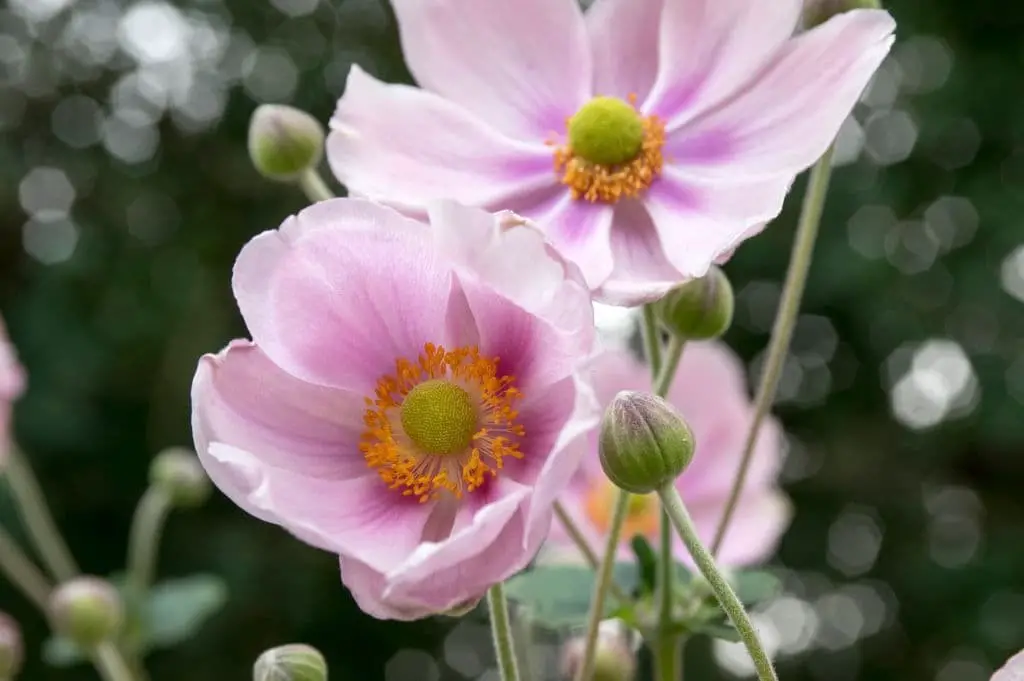
The Japanese anemone and windflower are two stunning varieties that can elevate any garden. The anemone grows up to 18 inches tall, producing delicate blooms in shades of pink, white, and blue. Its compact size makes it an ideal choice for smaller gardens or containers. In contrast, the Japanese windflower is a perennial that produces showy flowers up to six inches in diameter, typically blooming from late summer through fall.
This adds a pop of color to your garden during a time when many other flowers have finished blooming.
Anemone ‘Dreaming Swan’ (Japanese Anemone)

In the midst of late summer to early fall, the Anemone ‘Dreaming Swan’ unfurls its delicate white petals with a subtle light green center. This Japanese windflower thrives in USDA plant hardiness zones five through eight, making it a coveted addition to many American gardens. When given optimal growing conditions – full sun or partial shade – this stunning bloom can reach impressive heights of up to three feet, showcasing its unique charm and beauty.
Anemone ‘Wild Swan’ (Japanese Anemone)
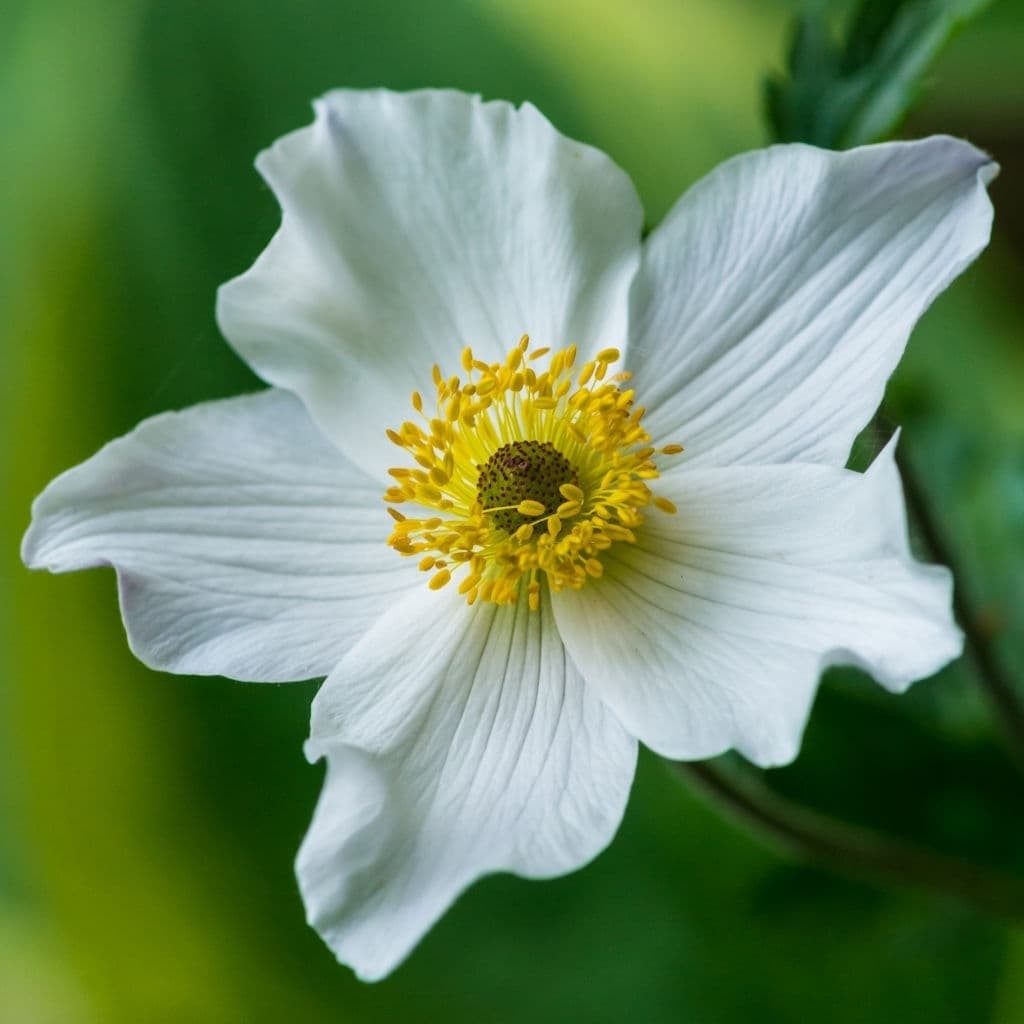
A stunning variety of windflower, the Anemone ‘Wild Swan’ is characterized by its vibrant white and pink hues. Its extended blooming period, spanning from early spring to late autumn, adds a touch of elegance to any outdoor setting. Not only does it make a lovely addition to gardens, but it can also thrive in containers, offering flexibility for gardeners.
Balkan anemone (Anemonoides blanda)

The windflower’s geographic range spans the Balkans, southeastern Europe, and Turkey, where it produces delicate blooms featuring soft white or pale pink hues and a vibrant yellow centre.
Anemone Blanda ‘Blue Shades’ (Grecian Windflower)
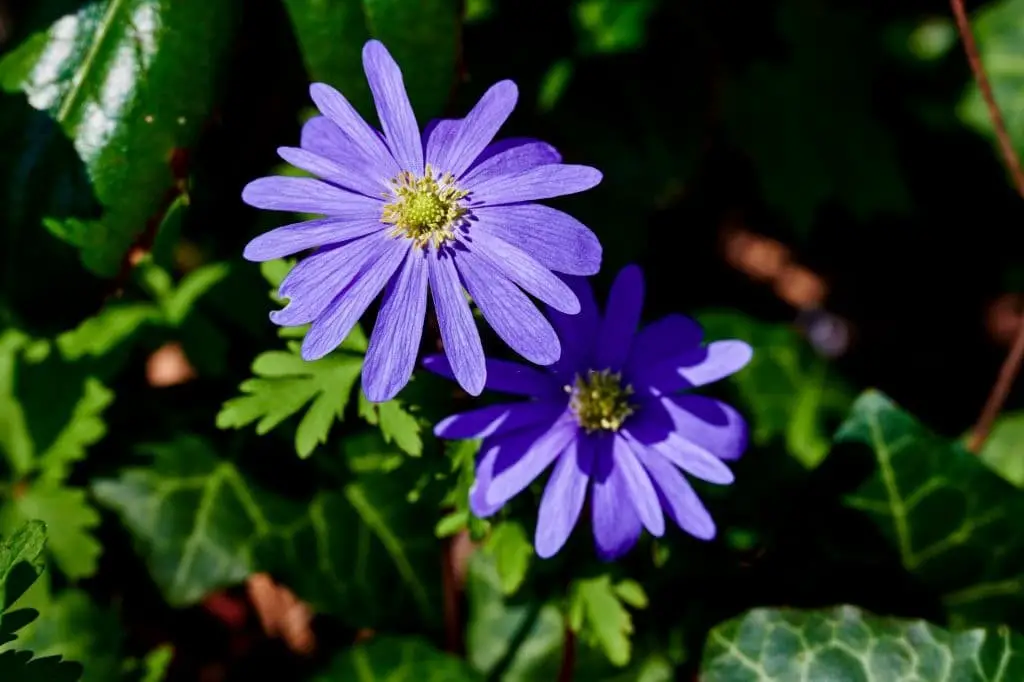
The Anemone Blanda ‘Blue Shades’ is a stunning windflower that flaunts its vibrant blue hue. Reaching up to 12 inches in height, this captivating bloom thrives in partial sun or shade. Its striking features include bluish-purple flowers adorned with bright yellow centers, creating a visually appealing display. Notably, the Anemone Blanda ‘Blue Shades’ blooms late in the spring and early summer seasons. Furthermore, it requires moist, well-drained soil to flourish.
Anemone Blanda ‘Blue Star’ (Grecian Windflower)

The ‘Blue Star’ windflower, a perennial delight, unfurls its vibrant blooms from April to May. The dainty flowers, characterized by their blue hue with white centers, rise on slender stems that can reach up to 18 inches in height. This charming plant thrives in partial shade and moist, well-drained soil conditions.
Anemone nemorosa (Wood anemone/European thimbleweed)
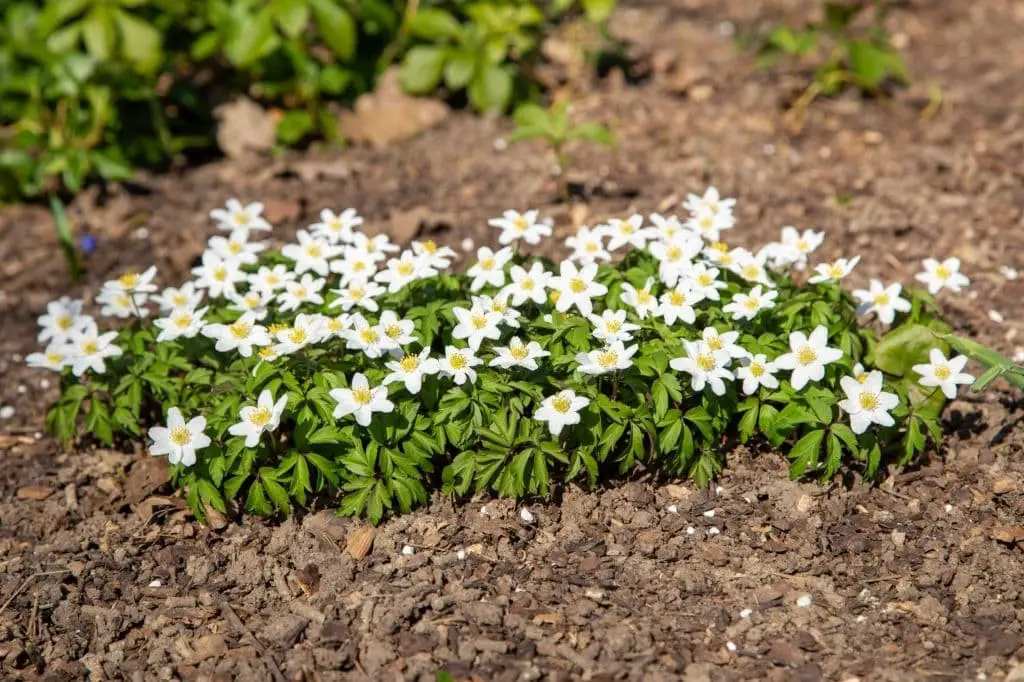
The Ranunculaceae family is home to the wood anemone, a charming flower that blooms from March to May. This perennial plant can grow up to 16 inches tall, featuring compound leaves with three leaflets that are deeply divided into five lobes and have sharply serrated edges.
Its delicate white blossoms resemble single daisies (Bellis perennis) growing on thick, green leaves.
The wood anemone is often found along woodland edges and shady forest clearings throughout North America, Europe, Asia Minor, Japan, and China.
Anemonoides ranunculoides (Yellow anemone/buttercup anemone)
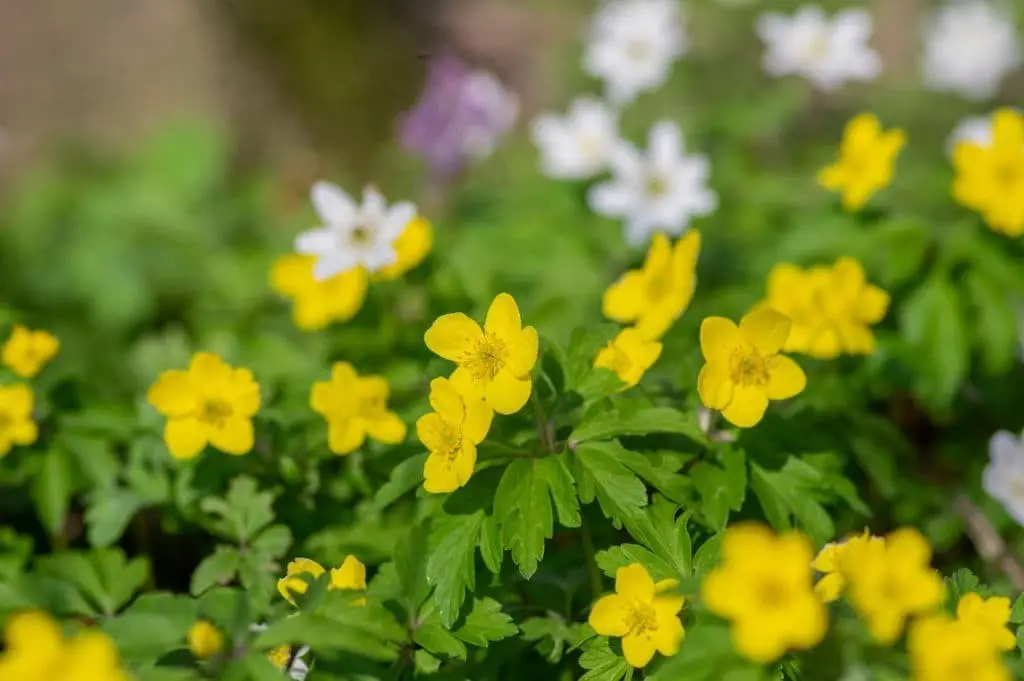
The Ranunculaceae family is home to this charming windflower, which bursts into bloom during the spring months of April and May. Reaching heights of up to 12 inches tall, this diminutive wildflower makes its presence known in meadows and fields across the region. Its compound leaves are a distinctive feature, comprising three leaflets that are deeply divided into five lobes and boast sharply serrated edges.
The star of the show, however, is the flower itself – a bright yellow bloom featuring five petals that grow on a slender stalk.
Snowdrop anemone (Anemone sylvestris)
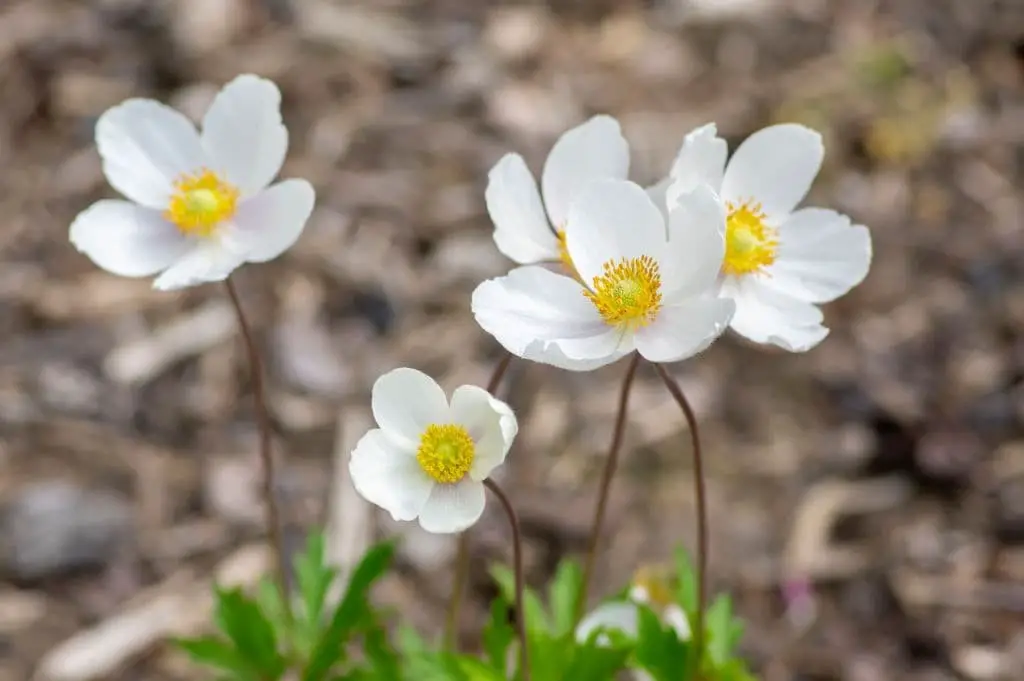
The snowdrop windflower is an early bloomer in the spring season, characterized by its striking white flowers and leaves that boast a glossy, waxy texture. One of the most distinctive features of this perennial is its ability to thrive for multiple years when properly cared for. To promote healthy growth, it’s essential to provide snowdrop windflowers with partial shade and well-drained soil conditions.
Tulip anemone
The tulip anemone, a stunning windflower, boasts vibrant yellow blooms adorned with striking red veins. Thriving in moist, shaded environments, this perennial gem produces its radiant flowers from late spring through early summer. As a perenial, it’s expected to return year after year, provided proper care is given, allowing you to enjoy the beauty of this flowering wonder for years to come.
Anemone tomentosa
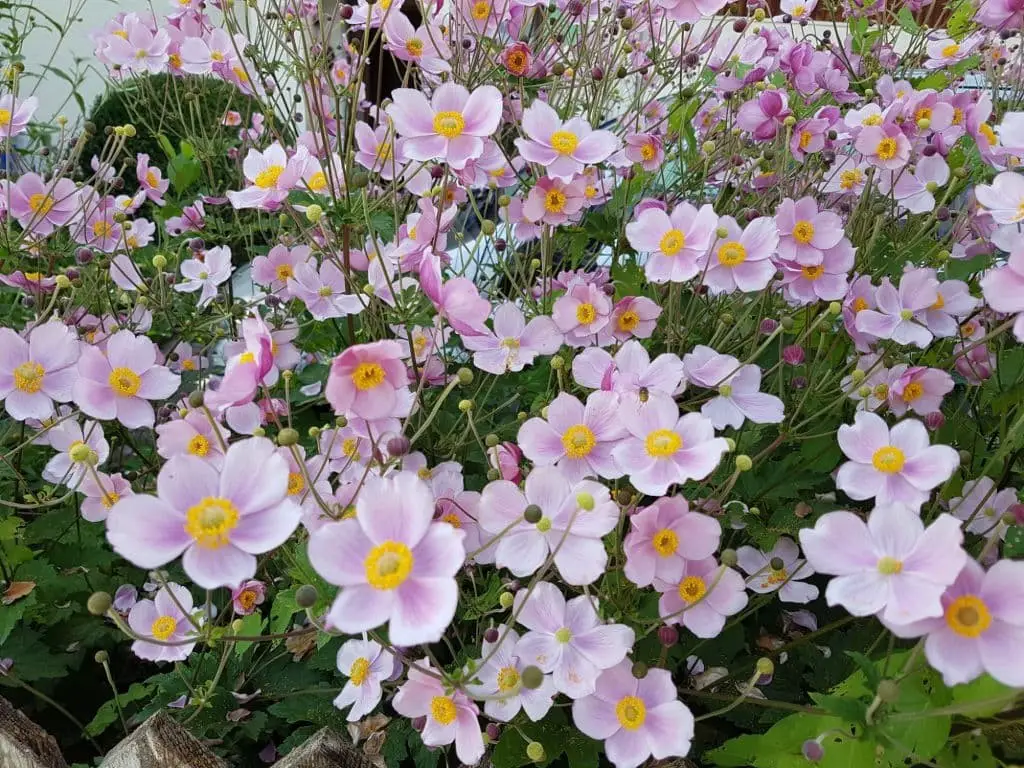
With its striking white blooms, the hairy anemone (Anemone tomentosa) is a perennial that thrives from April to June. Characterized by its silky, long hairs covering leaves and stems, this unique plant has earned its common name. A widespread inhabitant of North America’s meadows, woodlands, and wetlands, the hairy anemone can be spotted across the continent.
Canada anemone (Anemonastrum canadense)
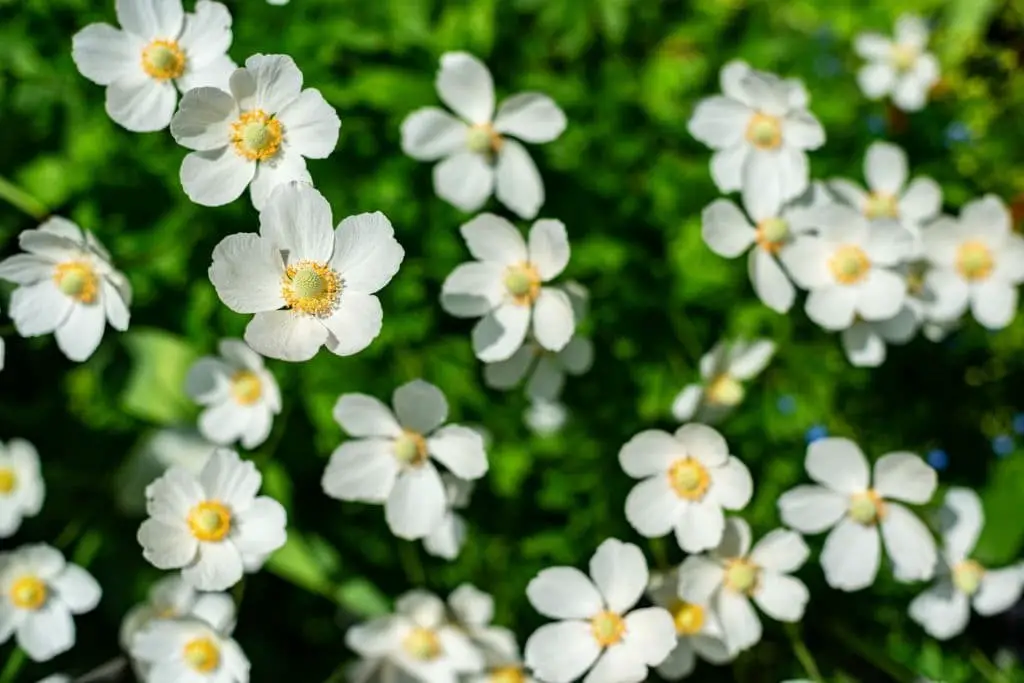
In eastern North America, one can discover the Canada anemone, a charming windflower that derives its name from the Latin word ‘anemone’, meaning wind. This dainty flower typically reaches heights of around 12 inches and is distinguished by its white blooms featuring delicate purple-tinged petals. As the seasons change, the Canada anemone comes into full bloom during the spring months, usually spanning from April to May.
Anemone quinquefolia (Wood anemone)
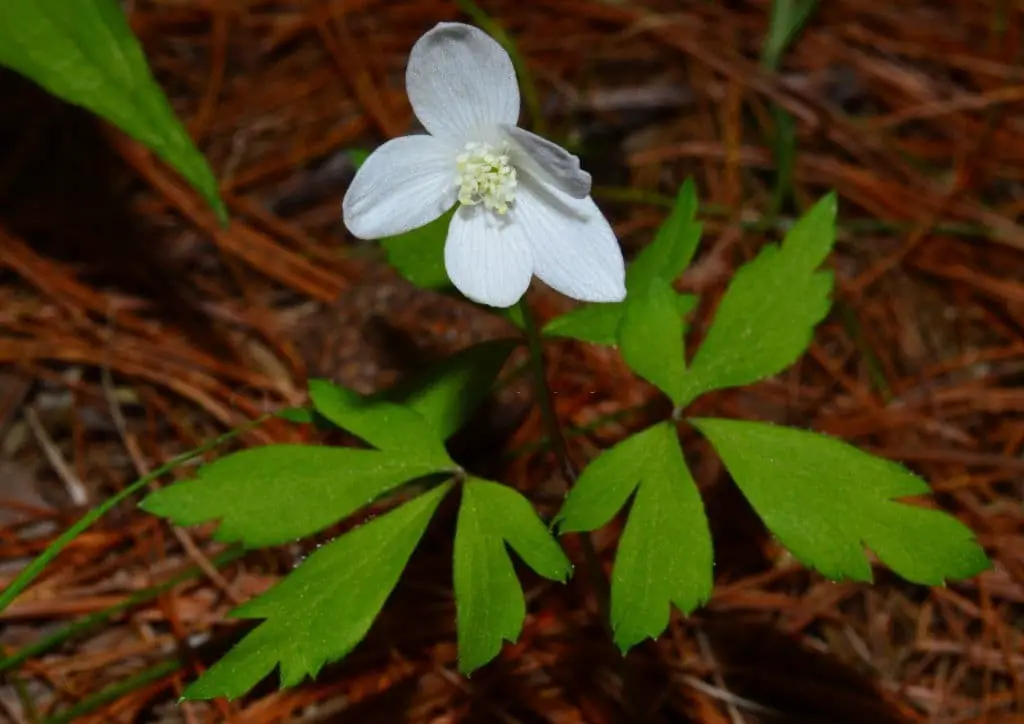
The Ranunculaceae family is home to a diverse range of plants, with many species blooming between March and May. These flowering plants can grow to be around 12-15 inches tall, but what’s unique about this family is their ability to spread via rhizomes – underground stems – or stolons – above ground stems. The leaves of these plants are compound, featuring three leaflets that are deeply divided into five lobes and boasting sharply serrated edges.
Anemone palmata (palmate windflower)
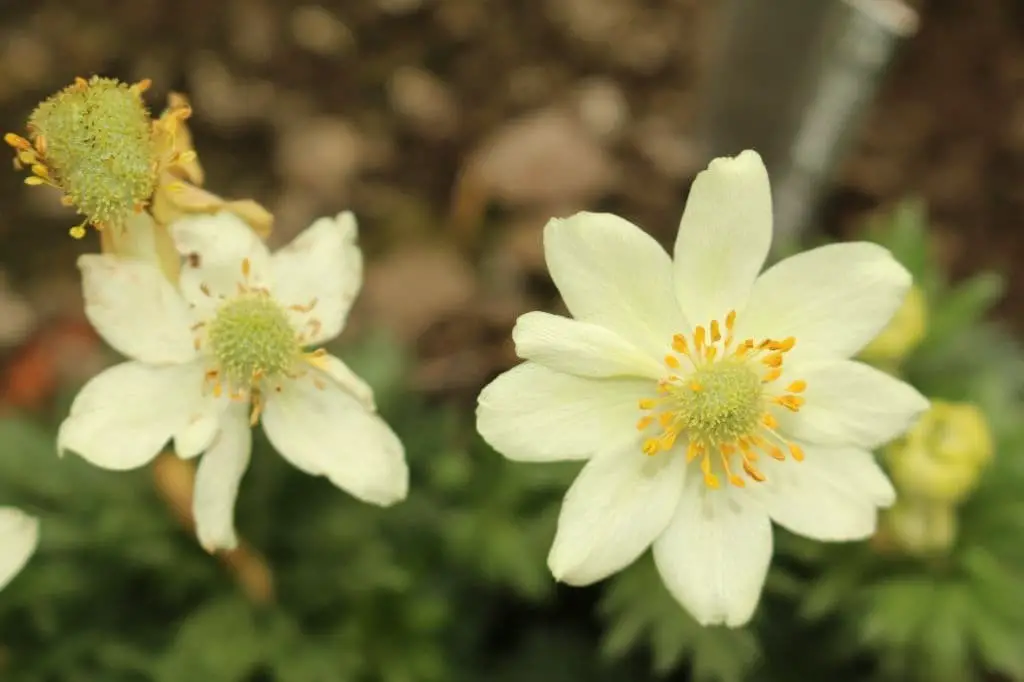
The Ranunculaceae family is home to a diverse range of plants, but one notable species stands out for its unique characteristics. From late May to early June, this plant produces an impressive display of blooms. Reaching heights of up to 12 inches tall, the plant’s compact stature belies its striking visual appeal.
A closer inspection reveals finely divided leaves, each with up to nine leaflets that are intricately shaped into three lobes and feature sharply serrated edges, adding a touch of elegance to the overall appearance.
Cultivation of Windflowers
For optimal growth, windflowers thrive in well-draining soil with high moisture levels, ideally situated in areas receiving full sun to partial shade. When it comes to propagation, these dainty flowers can be easily multiplied through the division of their rhizomes during the spring or early summer months, or alternatively via seeds.
How to Grow Windflowers from Seeds
For an optimal start to your windflower’s growth cycle, begin by sowing the seeds in early spring when the soil can be tilled but before any remaining frost danger has dissipated. Simply spread the seeds evenly across the surface of the soil and gently press them into place with your fingertips.
Following germination, which should occur within a two-to-three week window, ensure the soil remains consistently moist.
Once the seedlings have reached a height of roughly two inches, it’s essential to thin them out to approximately 12 inches apart.
As a hardy perennial, windflowers typically thrive in USDA zones four through eight. During late spring and early summer, these charming flowers produce vibrant, cup-shaped blooms in an array of colors including pink, purple, blue, or white.
Where to Plant Windflowers
Windflowers thrive in a variety of settings, including rock gardens, borders, and woodland areas where they can be paired with other spring-blooming bulbs like daffodils or tulips to create a stunning display. They also make a lovely addition to shaded pathways or walkways, where their delicate blooms can catch the eye as visitors stroll by.
When to Plant Windflowers
When it comes to planting windflowers, timing is everything. To encourage blooming, these flowers require a period of cold temperatures before they can burst forth with color. As such, autumn is an ideal time to plant windflowers, as the cooler weather allows them to develop and thrive. While windflowers typically prefer well-drained soil and full sun, they are also adaptable and can grow satisfactorily in partially shaded areas.
For those living in regions with mild winters, a late fall planting after the first frost can be a successful alternative.
Planting in Containers
Windflowers thrive in containers, provided they’re situated in a sunny spot with well-draining soil. While they do well in full sun, they’ll also tolerate partial shade. If your region experiences mild winters, you can plant windflowers in late fall after the first frost has passed. When these flowers are in bloom, they require minimal upkeep: simply water them as needed and remove any unwanted grasses or weeds that may be sprouting around their stems.
As the blooming period comes to a close, windflower plants can be pruned back to the soil level – either before winter sets in or at your discretion.
How to Care for Windflower Plants
As the windflowers start to blossom, they require a minimalist approach to care. Simply water them only when necessary and gently remove any stray grasses or weeds that might be encroaching on their stems. Conversely, during periods of dormancy, it’s recommended to prune the plants back to the ground prior to winter, allowing them to conserve energy for the next growing season.
How to Harvest Windflower Seeds
To preserve the windflower’s genetic material, extract the seeds from the mature flower heads when they’ve turned brown. Next, spread the seeds out on a sheet of paper and allow them to air dry for approximately two weeks. Once the drying process is complete, transfer the seeds to an airtight container where they’ll remain until next spring. When the weather permits, plant the windflower seeds outside as soon as the danger of frost has passed.
FAQs about windflowers
Are windflowers hardy?
While windflowers may not have the same reputation for being finicky as some other flowers, they’re actually quite resilient and capable of thriving in a range of climatic conditions. From temperate zones to cooler regions, these blooms can adapt and flourish, making them an excellent choice for gardeners looking to add some color and interest to their outdoor spaces.
What can I plant with windflowers?
When it comes to companion planting, the windflower is known to thrive alongside other popular blooms like roses, peonies, and daisies. Its ability to form harmonious pairings with these flowers creates a visually stunning display that’s sure to draw attention. Additionally, the windflower’s natural inclination to climb upward towards light sources makes it an excellent choice for planting near a fence or trellis, where its stems can stretch out and make the most of available sunlight.
How Long do Windflowers Last?
When properly cared for, windflowers can remain fresh and vibrant for an extended period – typically up to two years. To achieve this, it’s essential to store them in a location with controlled temperatures and humidity levels. A cool, dry environment is ideal for preserving the beauty of these delicate blooms.
Conclusion
As we conclude our exploration of windflowers, we’re grateful you joined us on this journey. We hope that the insights and information shared have sparked your curiosity and inspired you to venture out and witness these delightful blooms firsthand. We’re excited to share more flower-focused content with you in the coming days, so be sure to stay tuned for updates. Until then, thank you for being a part of our community – may your day be filled with beauty and wonder.
Related Posts
When it comes to flower delivery, tipping your floral courier is a common etiquette question. But should you tip? The answer lies in understanding the gratuities expected for this service. Similarly, gardening enthusiasts often wonder about the best perennials for partial shade gardens or containers. Among the many options available, some stand out for their vibrant colors and low-maintenance requirements.
In addition to these showstoppers, there are other important considerations, such as caring for African violets and growing Astilbe in shady corners. For those living in cold climates, finding the right shade perennials can be a challenge. With this diverse range of topics, gardening enthusiasts will find valuable insights and practical tips to enhance their green spaces.


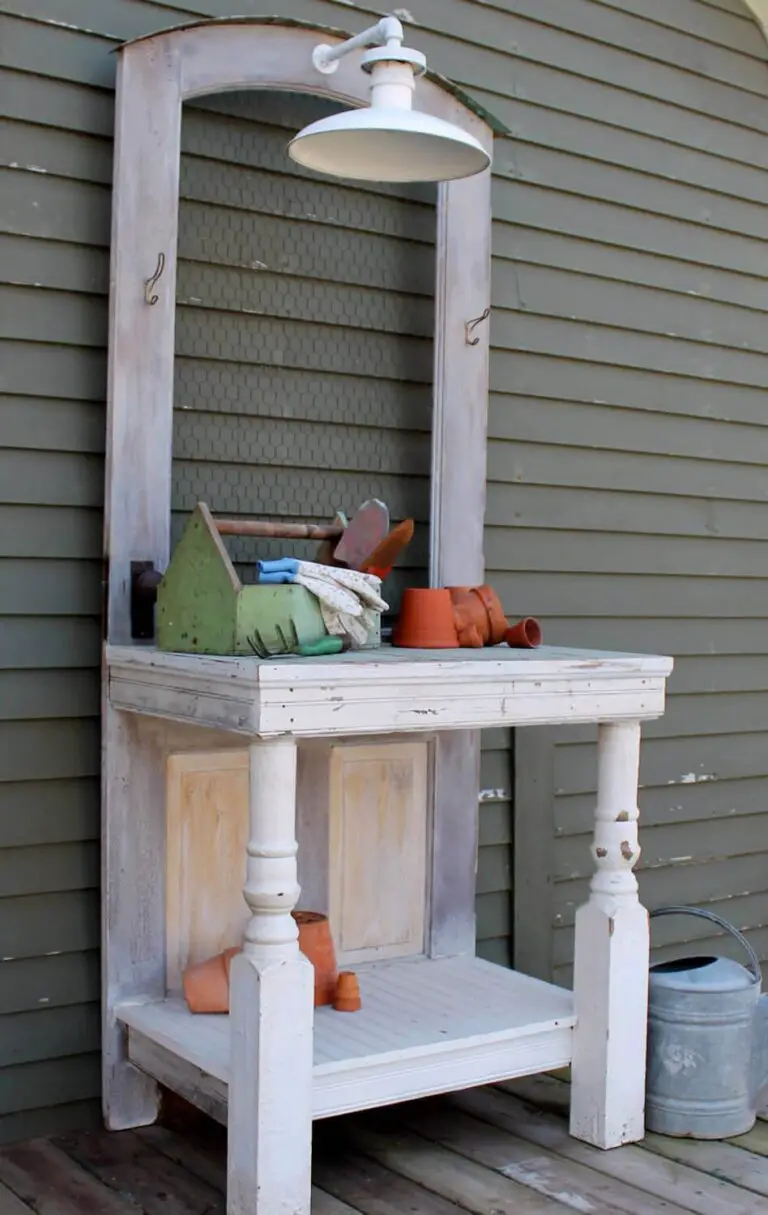
![One Line Rose Drawing Tutorial [With Examples]](https://potterpalace.com/wp-content/uploads/2024/05/1bc507a321d000a9265accb08023f8a5_compress-768x1024.jpg)


